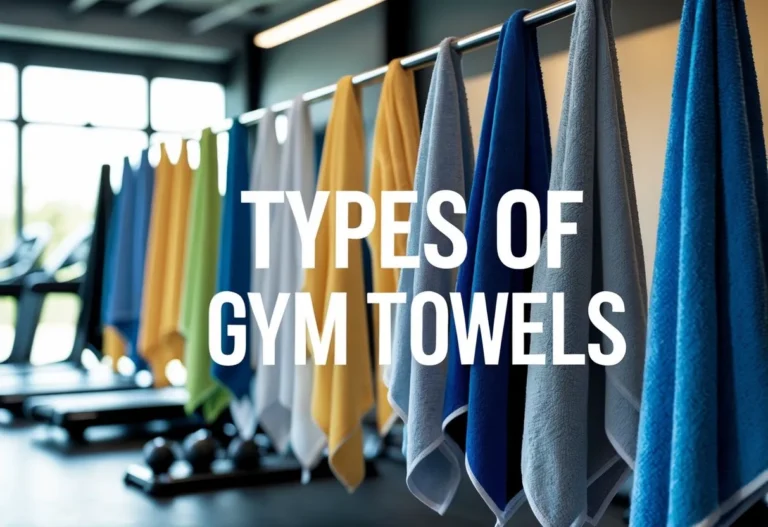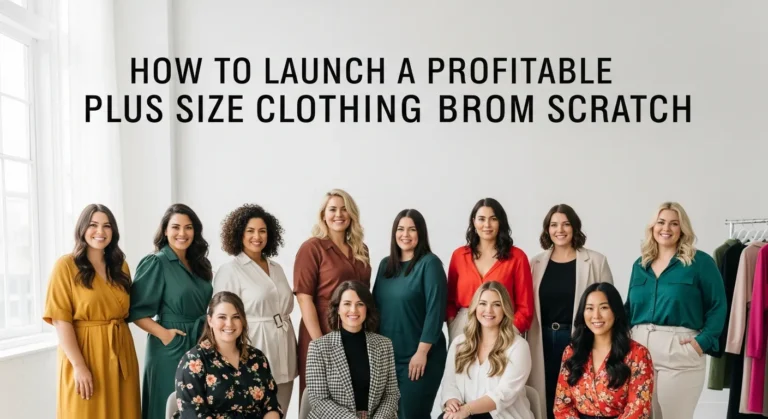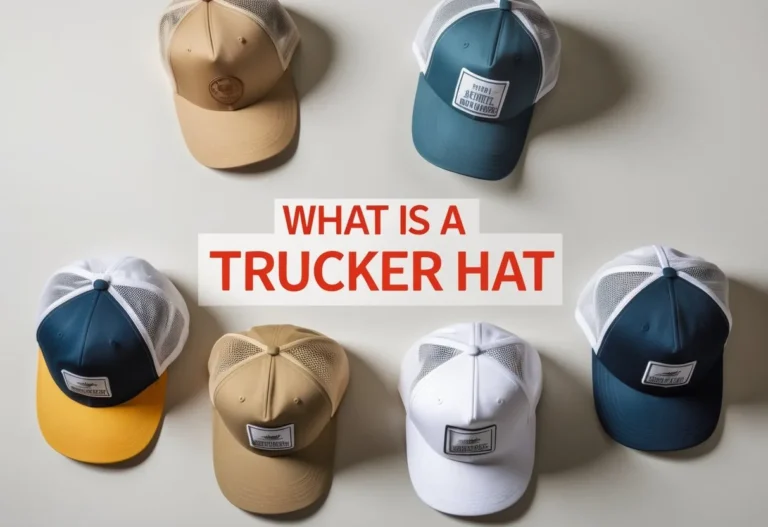How to Start a Kids Clothing Line is a smart way to combine creativity with business. It requires careful planning, from understanding what customers want to designing clothes that stand out. The key to success lies in researching the market, defining a strong brand, and working with reliable manufacturers to deliver quality products.

Developing a clear plan helps guide each step, including choosing your target age group and style, creating your collection, and setting up your business properly. Ensuring safety and comfort in your designs is essential to meet parents’ expectations and build trust. With the right approach, launching a kids clothing brand can grow steadily and attract loyal customers.
This guide covers everything needed to start and grow a kids clothing line, offering practical advice on each crucial phase. From exploring trends to managing production and marketing, it prepares readers to face challenges and make informed decisions that help their brand succeed.
Key Takeways
- Understanding the target market shapes product design and brand strategy.
- A detailed plan and quality control keep the business organized and trustworthy.
- Working with trusted suppliers and marketing wisely supports steady growth.
Research the Kids Clothing Market

Understanding the kids clothing market requires knowing who buys children’s clothes, what trends shape the industry, and how competitors position themselves. This research helps tailor products and marketing effectively to meet real customer needs and find opportunities.
Identify Your Target Customer
Knowing your target customer is critical. Most buyers are parents, but children also influence choices, especially older kids who express their style preferences.
Parents often look for clothes that balance comfort, durability, safety, and price. Some prefer natural fabrics like organic cotton for sensitive skin. Others prioritize affordability or trendy designs.
Marketers should also consider age groups, since infants, toddlers, and preteens have different needs and sizes. Including secondary buyers such as grandparents or relatives can expand reach.
Clear customer profiles help focus product design and messages, increasing chances of brand loyalty and repeat business.
Analyze Industry Trends
Children’s fashion evolves rapidly. Staying aware of current styles, colors, and fabric innovations is essential to remain competitive.
Popular trends often include eco-friendly materials, gender-neutral styles, and vibrant, playful patterns like animals or nature themes.
Brands must follow updates from industry events, social media, and color forecasting agencies to keep designs fresh.
Seasonal changes and holiday-themed lines also influence demand, making timing critical in product launches.
Understanding these trends helps align children’s clothing collections with consumer expectations.
Assess the Competition
Examining competitors reveals gaps and opportunities in the market. Research other children’s clothing lines for pricing, styles, quality, and target audiences.
Look at both local and online brands. Analyze their strengths and weaknesses, and note how they attract customers.
Competitor analysis includes product range, marketing tactics, and fulfillment choices like self-fulfillment or print-on-demand.
This insight supports strategic decisions about differentiating one’s own children’s clothing line through unique designs, price points, or superior materials.
Define Your Brand Identity

Building a strong identity helps a kids clothing line stand out and connect with customers. This includes picking a unique name and logo, creating a clear look that fits the target audience, and setting core values that guide all business choices.
Choose a Unique Name and Logo
The name should be easy to remember, spell, and say. It must appeal to parents and match the style of children’s clothing being offered. Checking for a trademark and domain availability protects the brand and helps with website creation.
A logo needs to be simple but distinctive. It should look good on labels, tags, and online platforms. Using child-friendly colors and shapes can make the logo more relatable. Consistency in logo use across all materials builds trust and recognition.
Develop a Memorable Brand Aesthetic
The brand’s visual style includes colors, fonts, and images. These elements should reflect the clothing’s feel—whether playful, classic, or modern. A clear aesthetic helps customers recognize the kids clothing store quickly.
Packaging, website design, and social media all need to match this look. Using consistent themes ensures a professional presence. It also makes marketing efforts more effective by giving a cohesive experience to buyers.
Establish Brand Values and Voice
Values explain what the brand stands for. These might include safety, quality, eco-friendliness, or affordability in children’s clothing. Clear values attract parents who share those beliefs and create loyalty.
The brand voice is how the company communicates. It could be friendly and fun or professional and trustworthy. Using the right tone in product descriptions, customer service, and ads ensures the message fits the brand identity and appeals to the right audience.
Create a Business Plan for Your Kids Clothing Line

A solid business plan sets the foundation for a kids clothing line. It maps out how the business will operate, make money, and reach customers. Key elements include the company’s legal setup, financial goals, and how it will sell and promote its products.
Determine Business Structure
The business structure defines the legal and tax framework of the kids clothing line. Common options include sole proprietorship, partnership, LLC, or corporation. Each has different implications for liability, taxes, and paperwork.
An LLC offers personal liability protection and flexible tax treatment, making it popular for small children’s clothing businesses. A sole proprietorship is simpler but offers no personal liability protection. Corporations can attract investors but require more regulations and formalities.
Choosing the right structure depends on factors like funding needs, risk tolerance, and future growth plans. It’s important to register the business correctly to operate legally and open business bank accounts.
Outline Financial Projections
Financial projections estimate future income and expenses. This helps plan for startup costs, cash flow, and profitability. In a kids clothing line, key costs include inventory, manufacturing, marketing, and store or website expenses.
Projections should cover:
- Startup costs (inventory, equipment, permits)
- Monthly operating expenses (rent, salaries, utilities)
- Sales forecasts based on market research
- Profit margins and break-even analysis
Use conservative sales estimates to avoid overly optimistic plans. Accurate financial projections will guide budgeting and help attract investors or loans.
Develop a Sales and Marketing Strategy
A clear sales and marketing strategy defines how the children’s clothing business will reach customers and generate revenue. It includes identifying target customers and the channels to engage them.
Popular strategies include:
- Selling online through an e-commerce store or marketplaces
- Opening a physical retail shop or pop-up store
- Partnering with boutiques or retailers
Marketing tactics should involve social media, influencer collaborations, and seasonal promotions. Emphasizing unique selling points—like sustainable fabrics or custom designs—can differentiate the brand.
Consistent branding and clear messaging will build customer trust and loyalty over time. The plan must align marketing spend with realistic sales goals.
Design and Develop Your Collection

Creating a kids clothing collection requires careful choices about fabrics, design, and safety features. Each piece must balance style with practicality, keeping children’s needs in mind. This step shapes the appeal and quality of the brand’s products.
Select Fabrics and Materials
Choosing the right fabric is vital for kids clothing. Soft, breathable, and durable materials like organic cotton, bamboo, and modal are ideal. These fabrics protect sensitive skin and allow easy movement.
Eco-friendly options are important to many parents. Organic cotton, grown without pesticides, reduces chemical exposure. It also appeals to those who prioritize sustainable products.
Quality should meet safety standards. Fabrics must be non-toxic and, for sleepwear, flame-resistant. Testing for shrinkage and colorfastness ensures clothing lasts through washing and play.
Sketch and Finalize Designs
Designs must fit the specific needs of different age groups, such as infants, toddlers, and older kids. Features like elastic waistbands, adjustable straps, and snap closures increase ease of use.
Visual appeal matters as well. Bright colors, playful prints, and themes like animals or space engage children’s imaginations. Include simple basics like tees and leggings to mix with fun pieces.
Designers should avoid small parts that can be choking hazards. Creating cohesive seasonal themes can help unify the collection, making it more attractive to customers.
Ensure Comfort and Safety
Comfort is key in children’s clothing. Seams should be soft and flat to prevent irritation. Stretchy fabrics help accommodate active movement and growth.
Safety involves using safe dyes and avoiding harmful chemicals. All aspects must comply with regulations, including fire safety rules for pajamas.
Functional details also support comfort and safety, like easy-open buttons and tagless labels. These elements make dressing easier for parents and children, adding value to the brand.
Source Manufacturing and Production

Finding the right manufacturing partner is key to producing quality kids’ clothing on time and within budget. This process includes researching suppliers, considering print-on-demand options, and negotiating terms to fit your business needs.
Research and Contact Suppliers
He or she should start by identifying suppliers with experience in children’s apparel. Look for those who follow safety standards and use suitable fabrics like organic cotton. Request product samples to check quality firsthand.
It’s important to verify certifications such as GOTS or Fair Trade, which show ethical and eco-friendly practices. Contact multiple suppliers to compare pricing, minimum order quantities (MOQs), and lead times. Clear communication about design specifics and production timelines reduces the risk of delays or errors.
Utilize Print-on-Demand Services
Print-on-demand is a flexible option, especially for startups with limited upfront capital. It allows products to be printed and shipped only after an order is placed. This reduces inventory risks and upfront costs.
These services often offer various products and customizable design options. They are useful for testing designs before committing to large production runs. However, they may have higher per-unit costs and limited branding options compared to traditional manufacturing.
Negotiate Production Terms
Once a supplier is chosen, negotiating terms is crucial. Focus on factors like price per unit, MOQs, payment schedules, and delivery times. Ask about options for smaller initial orders to test the market.
He or she should also clarify quality control processes and policies for handling defects or delays. A clear contract outlining responsibilities protects both parties and helps maintain a smooth production process. Flexibility on reorder quantities and turnaround times can support growth as demand changes.
Quality Control and Product Testing

Maintaining high standards throughout production is essential to ensure safety, durability, and customer satisfaction. This involves close checks of product samples and seeking feedback from early users to catch any issues before full-scale manufacturing.
Inspect Samples Thoroughly
Careful inspection of order samples is critical. Each piece should be checked for fabric quality, stitching strength, and color consistency. Any flaws like uneven seams or weak buttons must be noted.
Labels and safety tags must also be verified for accuracy and compliance with regulations. Checking the feel and fit of the garment on a child mannequin or model helps confirm design functionality.
Keeping a detailed checklist during inspection ensures nothing is overlooked. This process avoids costly mistakes and builds trust in the product’s quality before going to market.
Gather Customer Feedback on Prototypes
Customer feedback on prototypes reveals how kids and parents respond to the clothing in real life. Offering samples to a small group lets makers observe usage, comfort, and durability.
Feedback can be collected through surveys or interviews focusing on fit, material softness, ease of washing, and appeal. It may highlight needed changes in sizing, fabric choice, or design features.
This input guides refinements that improve the final product and reduce returns or complaints. Listening to target customers early creates clothing that truly meets their needs and preferences.
Launch and Grow Your Kids Clothing Line

Launching a kids’ clothing line requires careful planning, attention to detail, and ongoing marketing efforts. Building momentum starts with a well-prepared launch day, followed by clear marketing strategies to attract customers. Growth depends on adapting to feedback and expanding the brand wisely.
Prepare for Launch Day
Preparation for launch day involves setting up everything needed for a smooth start. The children’s clothing store, whether physical or online, must be fully stocked with the initial collection. Pricing should be finalized, and the website checked for usability and mobile-friendliness.
He or she should create a launch checklist covering product availability, customer support readiness, and payment processes. Testing the online system for order processing is critical to avoid issues. Also, gathering early customer feedback through soft openings or previews helps identify last-minute fixes.
Marketing materials like photos, product descriptions, and return policies must be ready for upload. A strong social media announcement or email campaign scheduled for launch day ensures reaching target customers right away.
Market Your Collection Successfully
Effective marketing reaches both parents and kids in clear, relatable ways. Focus on platforms where parents spend time, such as Facebook and Instagram, and use engaging content like photos of kids wearing the clothes or videos showing product features.
Paid ads targeting local communities or niche groups can boost visibility. Collaborating with parenting bloggers or influencers can add credibility and expand the audience.
He or she should also encourage customer reviews and feedback after purchase. Positive reviews build trust, while constructive feedback improves future collections. Regular posting and interaction on social media help maintain interest and customer engagement.
Offering promotions or discounts during the first few weeks can attract new buyers and encourage word-of-mouth referrals.
Scale and Expand Your Brand
Growing the brand means increasing product variety, improving operations, and reaching new customers. After analyzing sales and customer feedback, adding new sizes, styles, or seasonal collections can meet more needs.
He or she should consider expanding sales channels, such as listing products on marketplaces like Etsy or Amazon. Partnering with boutique stores or pop-up shops increases physical presence.
Investing in better fulfillment solutions streamlines shipping and returns, improving customer satisfaction. Tracking performance with sales data and customer insights guides smart decisions.
Continuous focus on quality and branding helps build a loyal customer base, supporting steady and sustainable growth.
Frequently Asked Questions
How to Start a Kids Clothing Line guide involves clear steps, practical budgeting, and careful planning. It requires understanding production choices and knowing how to run a business efficiently, even from home.
What initial steps are needed to launch a children’s clothing line?
First, research the market to identify your target age group and gaps. Then, develop a business plan outlining your goals and products. Designing your collection with age-appropriate, safe, and practical clothes comes next. Finally, find reliable manufacturers and set up sales channels.
What are the estimated startup costs for a kids clothing business?
Startup costs typically range between $50,000 and $150,000. These funds cover product design, sample creation, sourcing materials, manufacturing, marketing, and initial inventory. Costs vary depending on scale, quality of fabrics, and production volume.
How profitable is a kids clothing line in the current market?
The children’s apparel market continues growing, with an estimated value of over $280 billion by 2025. Profit margins usually range from 20% to 30%, with profitability often achievable within 18 to 24 months when managed carefully.
What business plan elements are essential for a children’s clothing store?
A strong plan includes an executive summary with your brand’s unique selling points. It should list product lines in detail, explain operations like production and quality control, and provide clear financial projections including startup costs and sales goals.
How can one establish a baby boutique operation from home?
Starting a baby boutique at home requires a clear niche and small initial stock to test the market. Renowned suppliers, online marketing, and social media help reach customers without physical stores. Efficient inventory and customer service keep operations smooth.
What should you consider when selecting kids clothing manufacturers for a new brand?
Choose manufacturers with experience in children’s apparel, strict safety standards, and ethical labor practices. Look for certifications like GOTS for organic fabrics and ensure they meet minimum order quantities you can manage. Quality control and production timelines are also key factors.






